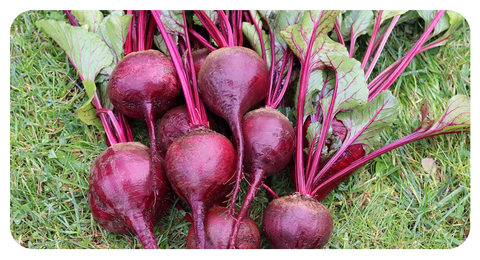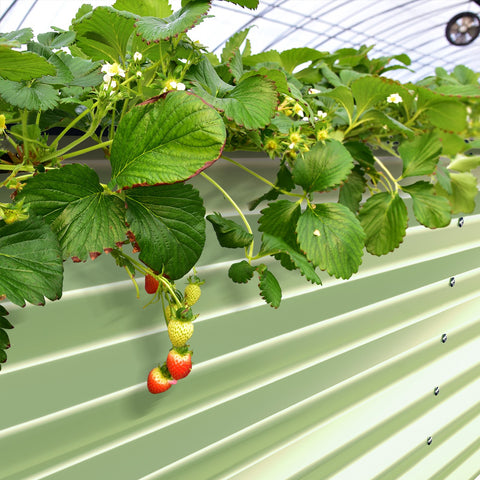This season, I’m giving vegetable gardening advice and also sharing the answers to some of your questions here. The following content also has some reference value for raised garden beds.
When do you start planting in autumn
Now is the time to start planting fall crops that take longer to produce, such as broccoli, cauliflower, cabbage and Brussels sprouts. You can start indoors and then move them outside when the temperature starts to drop into the 60s or 70s.
You can wait a few weeks to plant crops that mature quickly and plant directly outside. These include root vegetables such as beets, radishes, turnips and carrots, as well as greens such as kale, collard greens, lettuce and arugula.
How to trim tomatoes?
Pruning tomatoes is not always necessary, but it can increase your harvest. Only the uncertain tomato varieties need to be pruned. Not sure tomatoes have a main stem that continues to grow from the top like a vine. You can check the plant label or seed package to know if your tomatoes are uncertain.
When pruning tomatoes, the goal is to remove the third layer of stem, called suckers, that grows between the main and side stems. They take energy away from the plant. When the sucker is small, you can remove it with your fingers. If they are larger, you may need to use a manual trimmer.

How do I clean garden tools
It is very important to use clean trimmers when pruning tomatoes so as not to spread any disease from plant to plant. True responsible gardeners carry water and bleach with them and disinfect trimmers between plants. Actually, for many garden jobs, it's important to keep your garden tools clean and sharp. It only takes a few minutes and some basic materials to get your tools ready.
Should tomatoes and potatoes be grown together?
Tomatoes and potatoes belong to the same plant family, called the Solanaceae. Eggplant and peppers also belong to this family. Crops in the same plant family often suffer from the same diseases, so it's best not to plant them all near each other. This includes potatoes and tomatoes, both of which can suffer from "late blight". "You can grow tomatoes and potatoes in your garden, but spread them out. Also, rotate nightshade family crops around your garden and plant them in a different place each year.
You can also prevent wilt by watering the roots of the tomatoes, keeping the leaves from getting wet; Plant tomatoes at a distance enough to allow good air circulation; Plant varieties that are resistant to blight. An interesting blight-resistant heirloom variety called Mr. Striped, shown here, weighs about a pound or two when ripe, and these are steak-style tomatoes with pink and yellow streaks and a high sugar content that makes them sweet and delicious. The indeterminate vines begin to bloom in about 80 days and grow 8 to 10 feet tall.
Should you buy ladybugs?
Aphids are a pain, and it seems that trucking ladybugs to eat them is a good solution. But attracting native ladybugs to your garden is much better than buying them. The best way to attract ladybugs is to plant a variety of flowers and herbs, such as marigolds, zinnias, calendulas, chives, dill and cilantro, next to vegetables. It's also important not to use synthetic chemicals in your garden or on nearby lawns.
If you need more help attracting beneficial bugs like ladybugs to your garden, there is a product called Predalure, which uses a pheromone to attract beneficial bugs to your garden. It is recommended that you use one bait per 400 square feet of garden. Try it instead of buying ladybugs.
Dwarf sunflower variety
Sunflowers are really fun to grow and they add a lot to the vegetable garden because bees and other pollinators love them as much as we do. Many kinds of sunflowers do grow very tall, some as high as seven or eight feet. These tall varieties look great leaning against a fence, and they can even serve as live trellises for trailing plants like beans or cucumbers. But in a small garden, they can be overwhelming.
Of course, you can try some of the smaller varieties. I like to grow this "short" variety, about 30 inches tall, with big, beautiful flowers. I also grow a small variety called Dwarf Sunspots. "It's only about 24 inches tall and can produce multiple flowers on the same stem." Both varieties also grow well in containers.

What's eating my green beans?
Bean plants can be damaged by several different pests, but the holes in the leaves sound like they could be cucumber beetles. They especially like to nibble on seedlings, so one of the best ways to keep them away from your plants is to cover them with a row cover until the bean plants get a little bigger. If your bean crop has grown too long, you can pick up those seedlings and plant another round of beans. This time, cover your crops from the start.
What's so great about celery?
Celery is a cool season crop that grows best in spring or late summer into fall. It's hard to seed directly in the garden and find a place to transplant it, so you'll usually need to start indoors. In fact, I did find grafts at my local garden center this year and planted the plants in early spring. Once celery has started growing, it should be fine as long as you give it plenty of water and fertilizer.
The stems of garden celery may not be as thick as those of grocery store celery, but I think they taste much better. You can either cut a single stalk from the outside of the plant or harvest the whole plant. When you cook with the stems, be sure not to throw away the top of the leaves - that's where the best flavour is!
How far apart should tomatoes be planted?
This one is a little tricky because it really depends on the type and variety of tomatoes you're growing. In general, tomatoes should be planted 18 to 24 inches apart. This gives them plenty of room to spread and prevents disease and pest problems caused by crowded tomatoes. But there are many different varieties of tomatoes, and some can be grown closer together.
If you're growing compact tomatoes, you can plant tomatoes 12 to 18 inches apart. If you're growing in a container, it's best to plant one tomato per container. When you plant tomatoes, be sure to add a stake or cage as you plant them. You don't want to wait until later to add support because you could damage the plant's roots.
How do cilantro and parsley bloom
Cilantro and parsley are both biennials, meaning their life cycle is two years. In the first year, they grow a lot of leaves for you to harvest. The next year, they returned and soon began to prepare for planting. The plants spread higher and began to bloom. You won't have as many leaves to harvest the next year, but flowers are really helpful to the garden because they attract a lot of beneficial insects, including some natural enemies of garden pests. I always let cilantro and parsley bloom and then collect the seeds to replant or use in the kitchen. Coriander seed is the spice of cilantro.
Favorite variety of radish
I love growing radishes in the spring and fall, and I find them to be one of the easiest vegetables to grow. They also taste much better than the radishes you buy at the grocery store. One of my favorite varieties is the French breakfast radish. It is a mild, pink, oval radish that you can harvest at about 1-2 inches. Another radish I like is the watermelon radish, which is green on the outside and bright pink on the inside, just like watermelon. Watermelon radishes are large, round and ready to be harvested when they are 2 to 3 inches in diameter.
How to keep pests away from Broccoli
Broccoli can be a little tricky to grow, mainly because of the time and temperature. This is a cool seasonal crop, so it's best planted in the spring and fall, but it won't grow well if temperatures stay below 40 degrees or above 80 degrees for long periods of time. I live in District 7 and I have my best luck in spring.
Like most plants in the cabbage family, broccoli has a lot of problems with pests, especially cabbage worms. You can prevent cabbage moths from turning into cabbage worms by planting herbs like thyme and chamomile near your broccoli. If you still have problems, you can use an organic insecticide called Bt, which targets worms and caterpillars. Be sure to apply according to the directions.
Which seeds are most likely to germinate quickly?
Germination is the process by which a seed grows into a plant - the word "germination" is basically the same thing. Germination times depend on many factors, including temperature, but there are some plants that usually germinate within 1-2 weeks, which is fairly fast, including beans and peas, radishes, melons and squash, corn, and some vegetables such as lettuce, mustard, and arugula.
Winter gardening ideas in cold climates
Lately I've seen a lot of questions about how to continue growing in winter and, in general, in cold climates. While I don't have much experience gardening in cold climates, my friend and Canadian gardening book author Nikki Jabour does. Her new book, "Growing Under Cover," offers ideas for extending the season using row covers, greenhouses and even common household items like buckets, plastic jugs and cloths. The book will be released on December 22, but you can pre-order it now.
Should I bring a strawberry pot indoors for the winter?
Strawberries grow well in containers, and they are perennials, so they will grow year after year. If it freezes where you live, it's best to keep the POTS in a garage or other sheltered area for the winter, such as next to a house. You don't want the soil to dry out completely, so you need to water them every few weeks. Another option is to take your plants out of their POTS in the winter and plant them in a landscape bed, covered with mulch, where they will be warmer than in a container.

Why are my tomatoes blooming?
There are a few factors that can cause tomatoes to bloom, but the most common is hot, humid weather. Tomatoes love heat, but when temperatures persist in the 80s or 90s, the flowers die before they can be pollinated. Keep your plants watered and fertilized, they may start producing again if the weather is slightly cooler.
How much sun and heat should eggplant and pumpkin get?
Pumpkins and eggplants both need lots of sunlight, at least six hours a day. Eggplant is very fond of sun and heat and grows well in hot climates. If you want to grow eggplant but live in a mild area, one trick is to grow it in a large black container - the container will absorb heat and raise the soil temperature by 10 degrees, which the eggplant will love.









